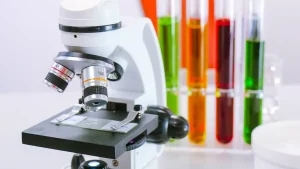Ceramic heat pipes play a crucial role in managing high-temperature heat removal. They efficiently transfer heat from one point to another, ensuring optimal performance in various applications. You might wonder why silicon carbide sleeves are significant in this context. These sleeves enhance the heat pipe’s performance by providing excellent thermal conductivity and durability. silicon carbide sleeves withstand extreme temperatures, making them ideal for high-temperature environments. Their unique properties ensure that the heat pipes function effectively, even under challenging conditions.

Key Takeaways
- Ceramic heat pipes are efficient thermal conductors that transfer heat quickly, making them ideal for high-temperature applications.
- silicon carbide sleeves enhance the performance of ceramic heat pipes by providing excellent thermal conductivity and durability, ensuring effective heat management even in extreme conditions.
- The durability of silicon carbide sleeves reduces maintenance needs and costs, making them a long-lasting solution for industries like aerospace and automotive.
- Ceramic heat pipes outperform traditional metal heat pipes by resisting corrosion and thermal expansion, providing a more reliable option for high-temperature environments.
- These heat pipes require minimal maintenance due to their lack of moving parts, offering a straightforward and dependable heat removal method.
- Industries such as electronics and semiconductor manufacturing benefit significantly from ceramic heat pipes, as they help maintain safe operating temperatures for sensitive components.
- Investing in ceramic heat pipes with silicon carbide sleeves leads to improved performance and longevity, making them indispensable in demanding industrial applications.
Understanding Ceramic Heat Pipes
Basic Functionality
Ceramic heat pipes serve as efficient thermal conductors. They transfer heat from a hot source to a cooler area. You can think of them as highways for heat, moving it quickly and efficiently. The heat pipe contains a working fluid that evaporates at the hot end. This vapor travels to the cooler end, where it condenses and releases heat. The cycle repeats, ensuring continuous heat transfer. This process helps maintain optimal temperatures in various applications.
Key Components and Materials
Ceramic heat pipes consist of several essential components. Each part plays a vital role in their functionality.
Role of Silicon Carbide
silicon carbide sleevesare crucial in ceramic heat pipes. They provide excellent thermal conductivity, allowing heat to move swiftly through the pipe. You will find that silicon carbide sleeves also offer remarkable durability. They withstand extreme temperatures without degrading. This makes them ideal for high-temperature environments. The silicon carbide sleeves ensures the heat pipe remains effective, even under challenging conditions.
Advantages of Ceramic Materials
Ceramic materials offer several benefits in heat pipe construction. They resist corrosion, which prolongs the lifespan of the heat pipe. You will appreciate their ability to handle high temperatures without losing strength. Ceramic materials also have low thermal expansion. This minimizes thermal stress during heating processes. These advantages make ceramics a preferred choice for high-temperature applications.
Benefits of Silicon Carbide Sleeves
High Thermal Conductivity
You will find that silicon carbide sleeves excel in thermal conductivity. This property allows heat to transfer quickly and efficiently through the heat pipe. When you use a silicon carbide sleeve, it ensures that the heat moves seamlessly from the hot end to the cooler end. This rapid heat transfer is crucial in maintaining optimal temperatures in high-temperature applications. The high thermal conductivity of silicon carbide sleeves makes them an excellent choice for industries that require efficient heat management.
Durability and Longevity
Silicon carbide sleeves offer remarkable durability. They withstand harsh conditions without degrading. When you choose a silicon carbide sleeve, you invest in a long-lasting solution. These sleeves resist wear and tear, ensuring that the heat pipe remains functional over time. Their robust nature means you won’t need frequent replacements, saving you time and resources. The longevity of silicon carbide sleeves makes them a cost-effective option for high-temperature environments.
Resistance to High Temperatures
You will appreciate the resistance of silicon carbide sleeves to high temperatures. They can endure extreme heat without losing their structural integrity. This resistance is vital for applications that involve intense heat, such as aerospace and automotive industries. When you use a silicon carbide sleeve, it ensures that the heat pipe continues to perform effectively, even under challenging conditions. The ability to withstand high temperatures makes silicon carbide sleeves indispensable in various high-temperature applications.
Applications in Various Industries
Aerospace and Defense
In the aerospace and defense sectors, you encounter extreme temperatures and demanding conditions. Ceramic heat pipes with silicon carbide sleeves excel in these environments. They efficiently manage heat in aircraft engines and spacecraft systems. You benefit from their ability to withstand high temperatures and thermal shock. This ensures reliable performance in critical missions. The durability of silicon carbide sleeves reduces maintenance needs, enhancing operational efficiency.
Automotive Industry
The automotive industry constantly seeks ways to improve vehicle performance and efficiency. You find ceramic heat pipes valuable in managing engine heat. They help maintain optimal temperatures, improving fuel efficiency and reducing emissions. Silicon carbide sleeves provide the necessary durability for long-lasting performance. You also appreciate their resistance to wear and tear, which minimizes the need for frequent replacements. This makes them a cost-effective solution for modern vehicles.
Electronics and Semiconductor Manufacturing
In electronics and semiconductor manufacturing, heat management is crucial. You rely on ceramic heat pipes to dissipate heat from sensitive components. Silicon carbide sleeves enhance this process by providing excellent thermal conductivity. This ensures that your devices operate within safe temperature ranges. The reliability of silicon carbide sleeves reduces the risk of overheating, protecting your investments. You benefit from improved device performance and longevity, making them indispensable in this industry.
Comparison with Other Heat Removal Technologies
Traditional Metal Heat Pipes
You might be familiar with traditional metal heat pipes. These pipes use metals like copper or aluminum to transfer heat. They work well in many applications. However, they have limitations. Metals can corrode over time. This affects their performance. You also find that metals have a higher thermal expansion. This can lead to thermal stress. In high-temperature environments, metal heat pipes may not perform as efficiently as ceramic ones. Silicon carbide sleeves offer better durability and thermal conductivity. They provide a more reliable solution for extreme conditions.
Liquid Cooling Systems
Liquid cooling systems use fluids to remove heat. You often see them in computers and industrial machinery. These systems can be effective. However, they require pumps and other components. This makes them complex. You need regular maintenance to keep them running smoothly. Leaks can occur, leading to potential damage. In contrast, ceramic heat pipes with silicon carbide sleeves offer a simpler solution. They do not require moving parts. This reduces the risk of failure. You benefit from a more straightforward and reliable heat removal method.
Emerging Technologies
Emerging technologies in heat removal continue to evolve. You might hear about advanced materials and innovative designs. These technologies aim to improve efficiency and performance. However, they often remain in the experimental stage. You may face challenges with cost and scalability. Ceramic heat pipes with silicon carbide sleeves already provide proven benefits. They offer high thermal conductivity and durability. You can rely on them for effective heat management in various industries. While new technologies hold promise, ceramic heat pipes remain a dependable choice for high-temperature applications.
Ceramic heat pipes with silicon carbide sleeves play a vital role in high-temperature heat removal. You benefit from their unique advantages, such as high thermal conductivity and durability. These features make them indispensable in industries like aerospace, automotive, and electronics. Silicon carbide sleeves ensure that heat pipes perform efficiently, even under extreme conditions. By choosing this technology, you invest in a reliable and effective solution for managing heat. The potential impact on various industries is significant, offering improved performance and longevity in demanding environments.
FAQ
What are ceramic heat pipes?
Ceramic heat pipes are devices that transfer heat efficiently from one location to another. They use a working fluid that evaporates and condenses to move heat. You find them useful in high-temperature applications due to their ability to handle extreme conditions.
Why use silicon carbide sleeves in heat pipes?
Silicon carbide sleeves enhance the performance of heat pipes. They offer high thermal conductivity, which allows heat to transfer quickly. You also benefit from their durability and resistance to high temperatures, making them ideal for challenging environments.
How do ceramic heat pipes compare to metal heat pipes?
Ceramic heat pipes provide better durability and thermal conductivity than metal heat pipes. Metals can corrode and have higher thermal expansion, leading to stress. You find ceramic heat pipes more reliable in extreme conditions.
Can ceramic heat pipes be used in electronics?
Yes, you can use ceramic heat pipes in electronics. They help dissipate heat from sensitive components, ensuring devices operate within safe temperature ranges. Silicon carbide sleeves enhance this process with their excellent thermal conductivity.
Are ceramic heat pipes cost-effective?
Ceramic heat pipes offer a cost-effective solution for high-temperature applications. Their durability and longevity reduce the need for frequent replacements. You save time and resources by choosing this reliable technology.
What industries benefit from ceramic heat pipes?
Industries such as aerospace, automotive, and electronics benefit from ceramic heat pipes. They efficiently manage heat in high-temperature environments, improving performance and reliability. You find them indispensable in these demanding sectors.
How do ceramic heat pipes work?
Ceramic heat pipes transfer heat using a working fluid. The fluid evaporates at the hot end and travels to the cooler end, where it condenses and releases heat. This cycle repeats, ensuring continuous heat transfer. You can think of it as a highway for heat.
Are there any maintenance requirements for ceramic heat pipes?
Ceramic heat pipes require minimal maintenance. They have no moving parts, reducing the risk of failure. You benefit from a straightforward and reliable heat removal method, unlike complex systems that need regular upkeep.
What makes silicon carbide sleeves resistant to high temperatures?
Silicon carbide sleeves resist high temperatures due to their unique properties. They maintain structural integrity under extreme heat, ensuring the heat pipe continues to perform effectively. You find this resistance vital for applications involving intense heat.
Can ceramic heat pipes handle rapid temperature changes?
Yes, ceramic heat pipes can handle rapid temperature changes. Silicon carbide’s resistance to thermal shock makes it suitable for components experiencing quick temperature variations. You rely on them for consistent performance in dynamic environments.







